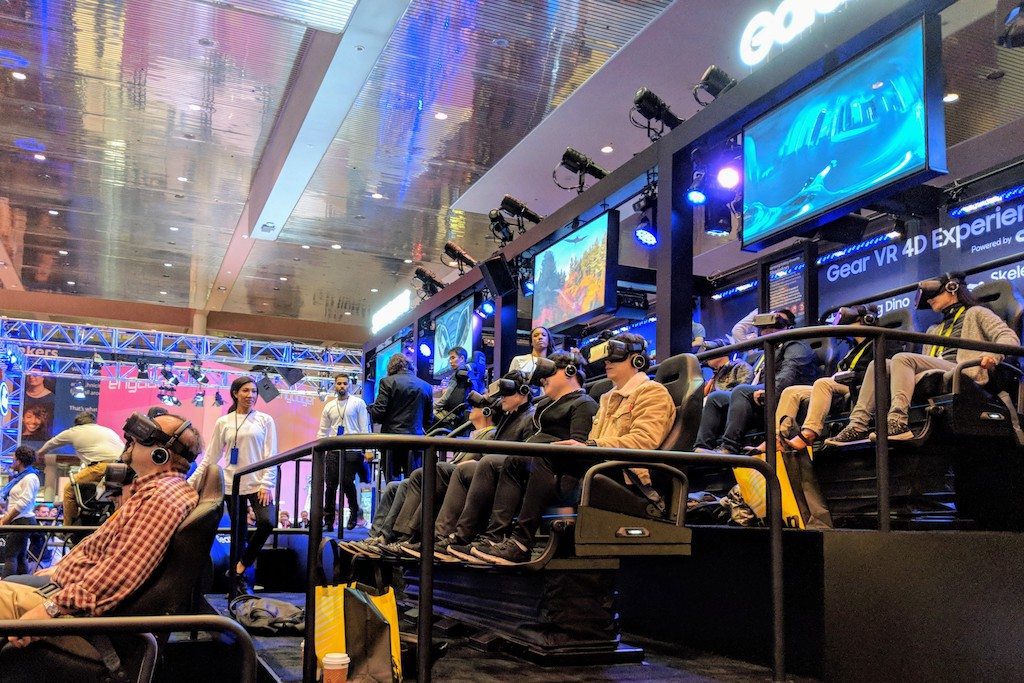Skift Take
Virtual reality continues to evolve as a media format. Vendors and developers are making new concessions based on how consumers use the technology, and the high costs associated with creating 360-degree content.
We’re a few years into the digital revolution that was supposed to catapult virtual reality to the forefront of consumer consciousness, but the technology still remains a niche product.
There are a few reasons for this; expensive headset units, fragmented platforms, and a lack of compelling programming are perhaps the most important.
While the travel industry has experimented with virtual reality content as a marketing tool, the lack of consumer interest has made brands wary about the large investment needed to produce top-notch videos and experiences.
Brands overall still need to be convinced that virtual reality content is worth it, according to developers.
“We are going through a period where education is needed with the brands,” said Guy Bedov, co-founder and CEO of Sidekick VR, during a panel discussion at CES in Las Vegas last week. “If you can get them through that, then you have an opportunity to do something really special.
“For [virtual reality] and [augmented reality], right now in the marketplace and where the tech stands, it’s very similar to where we were in the late ’90s with the Web. You didn’t know where you were going when you built that first site, but brands made that leap in the late 1990s and the ones that made that leap become these e-commerce giants and huge brands in the digital age.”
More Skift Coverage From CES
CES 2018 Dispatch: Transition to 5G Mobile Will Be Transformative for Hotels
Smart Robots at CES Have a Lot to Learn Before Hotels End Up Using Them
CES 2018 Report: A New Data Era Will Reshape the Travel Industry
The camera technology on display on the CES show floor has evolved to reflect the slow adoption of virtual reality. In the past, vendors at CES hailed cameras with a 360 degree as the next step in virtual reality filmmaking; this year, they focused on devices with a 180 degree field of view.
Content creators using these cameras won’t have to deal with producing full 360 degree images, and can instead focus on what a viewer sees directly in front of them. This means less neck-craning and spinning around for users, and reduced costs on the production front.
New Headsets, Similar Experience
The slow pace of growth in virtual reality entertainment hasn’t stopped technology giants from developing newer, more advanced headsets.
HTC showed off a new wireless version of its Vive hardware, dubbed the HTC Vive Pro, which will finally allow users to interact with roomscale virtual reality without tripping over cords in the process. The screen also has a higher resolution than the previous version, and a new type of sensor, that should smooth the experience for users.
This expensive solution is primarily for enthusiasts with deep pockets and powerful gaming PCs, though.
Several all-in-one headsets emerged from companies like Lenovo and Huawei, however, which will likely help simplify the virtual reality experience in a sales and marketing context. The Lenovo headset, which has been developed with Google, also features new positional tracking that will do a better job adjusting to movement in an effort to reduce motion sickness for users.
Most headsets today require slotting a smartphone in the front of the device to act as a screen, adding bulk and making it hard to start apps or view content.
These new headsets have built-in screens, so users don’t have to deal with sticking their phone in front of their face. For those in the travel space who rely on virtual reality headsets as a sales tool, these more powerful and comfortable devices will make life slightly easier.
But with new technology will likely come even greater fragmentation in the software ecosystem; apps that previous worked on a Samsung or Google headset may not work on devices featuring positional tracking, for instance, and this complexity may further discourage developers from creating for these platforms.
The Daily Newsletter
Our daily coverage of the global travel industry. Written by editors and analysts from across Skift’s brands.
Have a confidential tip for Skift? Get in touch
Tags: CES, virtual reality
Photo credit: Attendees at CES testing out virtual reality technology from Samsung. Skift
